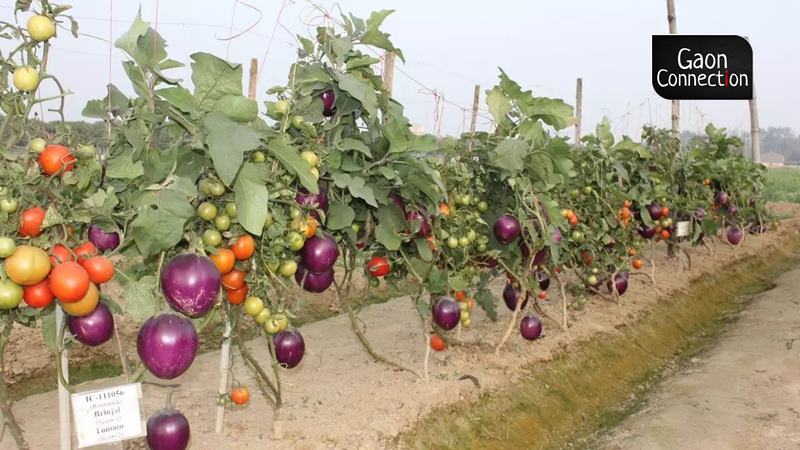As tomato prices begin to hit the roof, here’s some good news. Soon you may be able to grow both tomatoes and brinjals from the same plant in your kitchen garden or terrace garden.
Scientists from the Indian Institute of Vegetable Research (IIVR), Varanasi, Uttar Pradesh, a field unit of the Indian Council of Agricultural Research (ICAR), have developed a technique of grafting that allows two vegetables to grow from the same plant.
“The grafting of the tomato and brinjal has been successful. They are both from the same family though they have different characteristics,” Ananth Bahadur, principal scientist at IIVR, Varanasi, told Gaon Connection.
Also Read: Picking the right tomato for your kitchen or the farm
According to Bahadur, the scientists have been working on this new grafting method for a while and the Brimato – the brinjal and tomato combination – has been their greatest success!
The Brimato incorporates the sturdy qualities of the brinjal plant that withstands both excessive waterlogging and droughts well, the principal scientist said.
While so far they have experimented with grafting vegetables from the same family, the scientists plan to embark on grafting other vegetables together too.
How are the plants grafted?
“When the brinjal plant is about twenty five to thirty days old, and the tomato plant is about twenty two to twenty five days old, they are grafted together,” Bahadur explained.
Because of its hardiness, the rootstock of the brinjal is used as the base, after which the two vegetable plants are grafted, the scientist added.
After the grafting, the plant is kept in a controlled environment with carefully regulated temperature, humidity and light.
Then, the Brimato plant is kept in shade for five to seven days. In all, the entire grafting operation takes anything up to 18 days after which it is ready to be transplanted into the field, Bahadur said.
Also Read: Good news for potato farmers as scientists find a way to fight blight
There are plans afoot for large scale cultivation of the Brimato. “Sixty to seventy days after they have been planted, the plants begin to yield the brinjal and tomatoes. Each plant yields up to 2.3 kilograms of tomato and 2.64 kilos of brinjal,” the principal scientist said.
This method would be perfect to grow in kitchen and terrace gardens too, said Bahadur. “In a small area you can have two different vegetables,” he pointed out.
Also Read: Two new techniques to improve yield and nutritive value of oyster mushrooms
However, currently there is research and recce happening along with farmers to see how Brimato cultivation can be scaled up.
The Indian Institute of Vegetable Research has already successfully grafted the Pomato, a combination of the potato and the tomato.
Read the story in Hindi



















